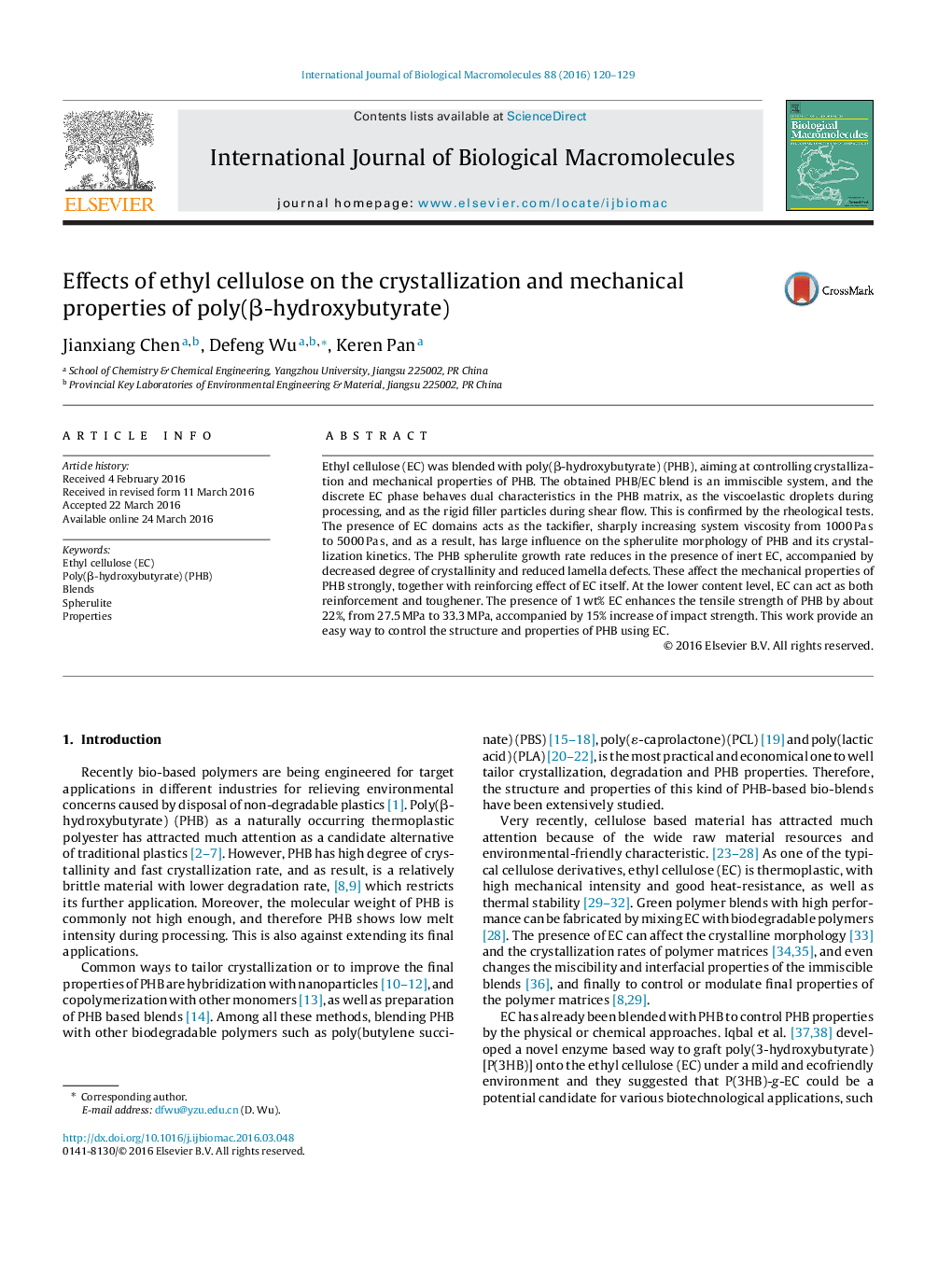| Article ID | Journal | Published Year | Pages | File Type |
|---|---|---|---|---|
| 1986106 | International Journal of Biological Macromolecules | 2016 | 10 Pages |
•Discrete EC behaves dual characteristics as a filler and as a droplet in PHB.•The presence of EC has no nucleation effect to PHB crystallization.•The presence of EC reduce spherulite growth rate and crystallinity of PHB.•EC acts as good reinforcement or toughener to PHB at various content levels.
Ethyl cellulose (EC) was blended with poly(β-hydroxybutyrate) (PHB), aiming at controlling crystallization and mechanical properties of PHB. The obtained PHB/EC blend is an immiscible system, and the discrete EC phase behaves dual characteristics in the PHB matrix, as the viscoelastic droplets during processing, and as the rigid filler particles during shear flow. This is confirmed by the rheological tests. The presence of EC domains acts as the tackifier, sharply increasing system viscosity from 1000 Pa s to 5000 Pa s, and as a result, has large influence on the spherulite morphology of PHB and its crystallization kinetics. The PHB spherulite growth rate reduces in the presence of inert EC, accompanied by decreased degree of crystallinity and reduced lamella defects. These affect the mechanical properties of PHB strongly, together with reinforcing effect of EC itself. At the lower content level, EC can act as both reinforcement and toughener. The presence of 1 wt% EC enhances the tensile strength of PHB by about 22%, from 27.5 MPa to 33.3 MPa, accompanied by 15% increase of impact strength. This work provide an easy way to control the structure and properties of PHB using EC.
